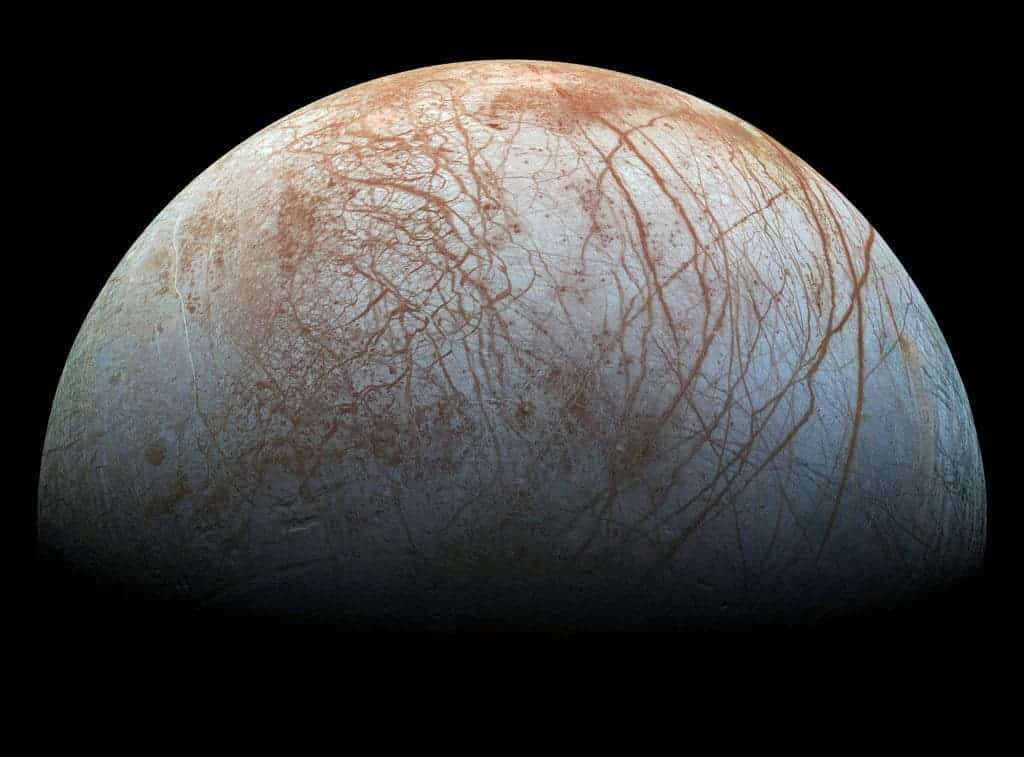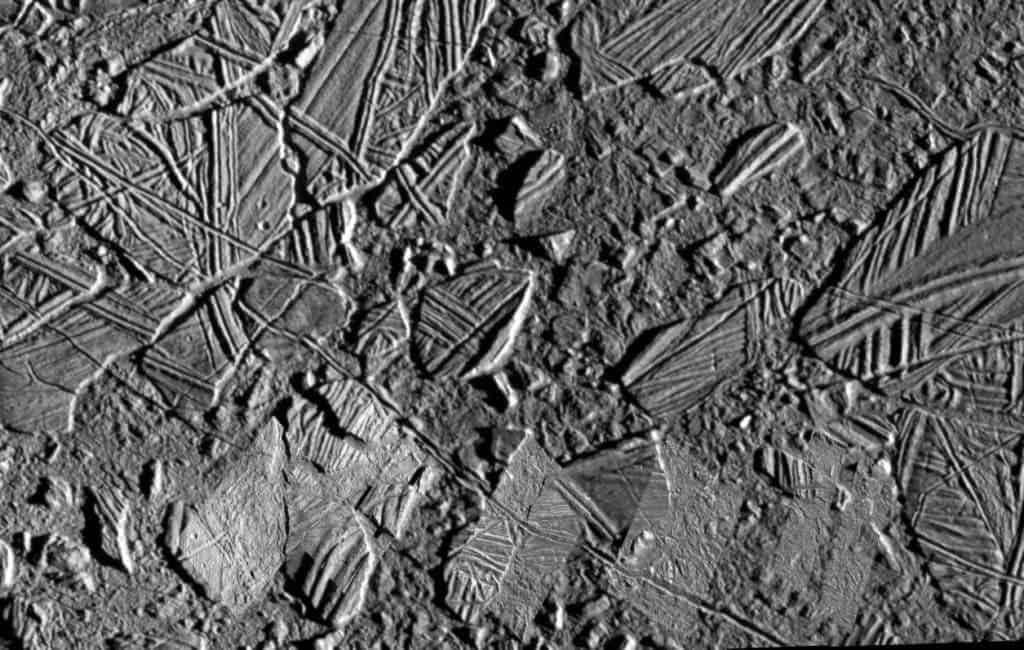Europa’s subsurface oceans might be a lot more like the ones on Earth, raising a tantalizing question: could life exist in the satellite’s depths?

When you think about Earth-like places in our solar system, Europa is probably not on the list. A frigid, ice-covered satellite, hanging around in Jupiter’s orbit does not exactly resemble what we see around us every day. However, the similarities between the Earth and Europe might lie beneath the surface — literally.
Researchers have known for quite a while that beneath its surface ice, Europa hosts oceans of liquid water. However, the chemistry of this water has remained rather unclear. A new study suggests that this ocean might be salty, just like the ones on Earth.
Using a visible light spectral analysis, planetary scientists at Caltech and the Jet Propulsion Laboratory found that the yellow color visible on portions of the surface of Europa is actually sodium chloride — a compound you might know as table salt.

This doesn’t really come as a surprise since it was hypothesized for a while that the ocean might be salty, but it’s a heavy piece of evidence, suggesting that Europa’s oceans might be quite similar to Earth’s oceans.
Confirming the findings wasn’t easy, though.
“We thought that we might be seeing sodium chlorides, but they are essentially featureless in an infrared spectrum,” says Mike Brown, the Richard and Barbara Rosenberg Professor of Planetary Astronomy at Caltech and co-author of the Science Advances paper.
So what the team did was to irradiate ocean salts in a laboratory, mimicking the conditions on Europa. They found that several changes occur after irradiation — most importantly, the salts changed color to exactly what was seen on Europa in a region called the Tara Regio.
“Sodium chloride is a bit like invisible ink on Europa’s surface. Before irradiation, you can’t tell it’s there, but after irradiation, the color jumps right out at you,” says Hand, scientist at JPL and co-author of the Science Advances paper, adding that salt could also be a complicated chain of sub-surface processes and not come directly from the oceans.
“We’ve had the capacity to do this analysis with the Hubble Space Telescope for the past 20 years,” Brown says. “It’s just that nobody thought to look.”
The consequences of this discovery are not trivial. Life as we know it requires three things: water, energy, and suitable chemistry. Salt, specifically the sodium ions in table salt, is also crucial for a whole range of metabolic processes in plant and animal life. So the main ingredients for life may very well be on Europa. It’s still too early and speculative to say whether this is actually the case, but it certainly makes Europa one of the most interesting targets for future exploration.
The study was published in Science Advances.


